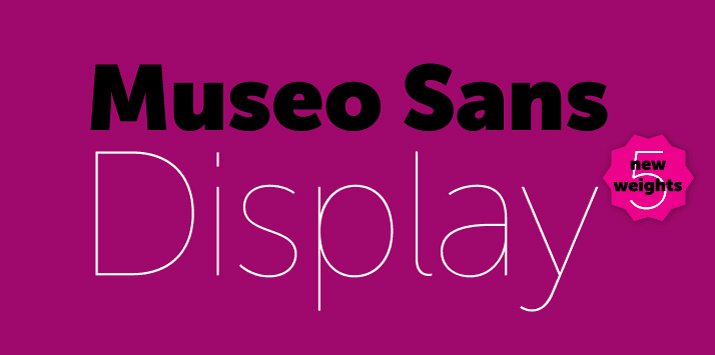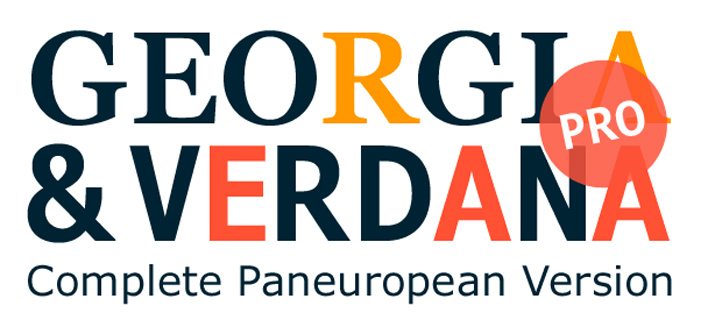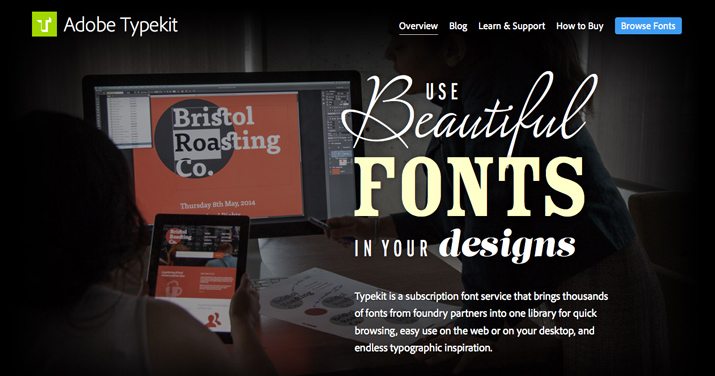What Is a Font License? (And Do I Need One?)
Almost every design project you encounter will include type of some kind. And it’s very likely that that type will start as a font on a computer, unless you create it yourself. With using specific computer fonts, come some very specific rules regarding their use, which can vary by project.
So what is a font license? Do you need one? And where can you find the tools and resources you need to make sure you are using fonts properly?
Lucky for you, we have a primer. (And the images in this post include fonts that you can license to use in your projects.)
What is a Font License?


A font license grants the owner the right to use a typeface in a specific manner as outlined in the license. (Note that in this article we are going to use the terms “font” and “typeface” rather interchangeably.) Every typeface comes with a license of some sort – even those free online typefaces.
The big caveat about font licenses is that every type house or designer has the right to create a license of any type.
So it is imperative that as a designer you check the specific license for any typeface you use commercially before you use it. You can find these rules in the End-User License Agreement that is “attached” to every font you download or buy. (And if you don’t have one, you can find it with a quick online search.)
Types of Font Licenses
Fonts are technically considered bits of computer software, and just like any other software you are not supposed to install or use it without a license. This definition is beginning to evolve and primarily applies to desktop fonts; web fonts have a set of rules that are somewhat different.
Trademarks, design patents or copyrights often legally protect typefaces, fonts and their designers. This is why obtaining the proper license is so important. It ensures that the right person (or company) is compensated for their work.
Desktop and Print Licensing
A desktop or print font license is a basic, standard font license that applies to most of the typefaces that come on your computer or with any other software you install. This license allows you to use the font on your computer and use it to make static images, such as designing something for print. This applies to everything from posters to t-shirts to business cards to mugs.
WebFonts and Licensing
A webfont is a font that is used online. What makes it different is that the font is formatted so that browsers can see and render it accurately. This is often called a dynamic font, because the creator and user must have the font to see it properly.
These fonts are often embedded in the design project to ensure this works properly. Fonts can be embedded by the designer (but most licenses do not allow for this), while others include hosted embedding (this is how most webfont services work).
Open-Source Licensing
Open-source fonts are among the top choice for digital designers. Open-source fonts are free to obtain, free to use and free to share. Often open-source fonts come with the ever-increasingly standard Open Font License by SIL International, an international language expert. The OFL is “a free, libre and open source license specifically designed for fonts and related software based on our experience in font design and linguistic software engineering.”
This license allows for many things that others do not. It can be distributed and it can be modified. The primary rules for us are that you do not sell and OFL typeface and give proper credit for use.
Google Fonts, for example, the site and font service used by a huge number of designers for the web uses this type of font license. From Google:
“All of the fonts are Open Source. This means that you are free to share your favorites with friends and colleagues. You can even customize them for your own use, or collaborate with the original designer to improve them. And you can use them in every way you want, privately or commercially — in print, on your computer, or in your websites.”
Commercial Licenses
Almost all of the above licenses apply to personal use. Commercial use for any typeface is a whole other matter and should be handled with care; even a typeface labeled as “free download” may not always be free if used commercially.
When working on projects for clients, for example, the most common practice is for the designer to use and work with fonts that are licensed by the company. This includes typefaces used for a company’s logo and those outlined in the company’s style guide. The thing designers have to be careful with is use – these fonts can’t be used for other clients unless they too own a license for them.
If you, the designer, are using a font from your own collection for a client, it is likely that you need multiple font licenses. One for personal use, and one for the client. Make sure to check the EULA carefully for each typeface so you don’t slip up.
Do I Need a Font License

The simple answer is yes. When in doubt a designer should always assume that a license is necessary. And then check the specific license of the typeface you are using and for how you are using it. Following this routine is probably enough to keep you from encountering any font drama.
For Personal Projects
A desktop license is typically enough for anything you are doing on your computer that is not for a client. Likely, you’ll have a nice collection of typefaces that come installed with software or from downloads that you like and can carry you through most personal projects.
For Client Projects
When it comes to working for someone else, the best option is to work with fonts that they client has licenses for. Before using any font for a commercial project or use, make sure it is ok.
Commercial projects often require extended licenses and even some of those font freebies require payment for use commercially. When doing a project for hire, or for a client (or even yourself) that will be used for monetary gain, make sure to read every single line of fine print first.
For Digital Projects
Digital projects often require fonts that work in a number of environments, making use of a subscription font service particularly appealing. This allows you to buy a plan of fonts that you can use in a number of projects for one price with all the proper licensing included. Adobe’s Typekit is a popular option that has multiple plan levels (including a small free selection of typefaces.) Google Fonts are another very popular option for digital projects.
Getting Your Fonts in Order
Now that you understand why you need font licenses, how can you obtain them? The most common ways include buying or downloading a typeface right from a type vendor, as a part of a large software package (such as the fonts that come with the Adobe Suite), downloading a typeface from a designer or website or subscribing to an online type service.
But be careful of this rule that often applies to font licenses: “The most basic legal rule of font copyright is that unless the license specifically allows it, fonts cannot be shared among multiple computers, even if they are all owned by the same person or corporation, and fonts cannot be given away to others,” according to SIL International. When there is any question about a license or usage, refer to the EULA or contact the vendor directly.
Font Licensing Resources
Here are a few more resources to help you navigate the world of font licenses.
- The League of Moveable Type book trio: “Making Sense of Font Licensing,” “The Common Question Guide to Burning Font License Questions” and “The Quick & Little Guide on How to Embed Fonts Yourself”
- Adobe Type Font Licensing Center
- Universal Type Server font management software and service
- MyFonts: Usage in a Logo
- Process Type Foundry: Webfont Licensing FAQ
- Fonts.com Licensing Options
- Typekit Font Licensing
- Commercial Type User License
- Google Fonts Directory
Conclusion
The most important things to understand about font licenses are that you likely need some sort of font license for most of the work you will be doing and not all font licenses are the same. Commonly, they vary by the creator of the font and whether you are using a typeface for personal or commercial use. Check each license carefully based on how you will be using it.
The best advice is to think about usage every single time you start a project. Make sure each typeface is licensed for the work you are doing and personal and commercial licenses are kept separate. If you are doing a lot of client work, you might even want to invest in software to keep track of it all.